If you’re a tennis player, you know that a well-strung racket can make all the difference in your game. But have you ever wondered how much it costs to string a tennis racket? The answer depends on a variety of factors, from the type of string you choose to the expertise of the person doing the stringing.
We will explore the different variables that impact the cost of stringing a tennis racket and provide you with some insight into what you can expect to pay for this essential tennis service.
How Much Does It Cost to String a Tennis Racket?
The cost of restringing a tennis racket can vary depending on a few factors, with the average cost being around $40. However, the price can range from as low as $15 to as high as $75, depending on the quality, brand, type, and length of the strings used.
Although the cost may differ, the process of restringing a tennis racket is not complex once you understand its main aspects.

What Are the Different Factors That Can Affect the Cost of Restoring a Tennis Racket?
Restringing a tennis racket is generally affordable for most players, with an average cost that is fairly low. However, it’s important not to rush the process and simply choose whatever is most convenient at the moment just to get it done quickly.
There are several crucial factors to consider before restringing, which can impact the overall cost, including some hidden expenses that may arise. Taking the time to carefully consider these factors can help you choose the best strings for your racket and ensure that you’re getting the most value for your money.
The Brand of Tennis String
The brand you choose can have a significant impact on the cost of restringing your tennis racket. Generally, higher-end brands charge more than average but offer quality and longevity. However, you can still save money by taking advantage of frequent discounts from big retailers or searching for affordable string prices from reputable brands.
The cost of restringing varies based on the racket model and can range up to $75 or even $100, but it’s not a fixed cost. If you’re on a tight budget, you can also find string options from lesser-known brands that still offer good quality at significantly lower prices. On the lower end of the spectrum, the average price for strings ranges from $10 to $15.
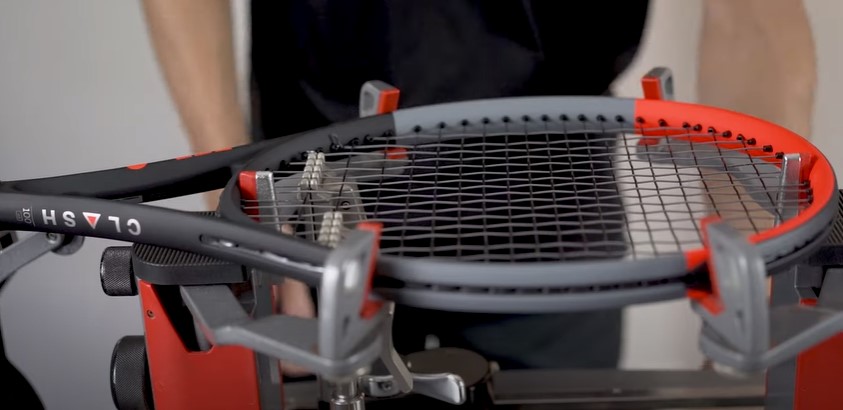
The Types of Tennis String
When considering the cost of tennis strings, the primary factor is the material they are made of. Your choice of string material can significantly impact your performance and comfort on the court. While natural gut is a preferred choice, even among professional athletes, it is also the most expensive option.
Nylon or multifilament strings offer comparable performance benefits at a more reasonable price point. Kevlar and polyester strings are the least expensive, yet still offer several advantages in the game. If you prefer a hybrid string type, expect to pay more as you combine materials to achieve your desired features.
The Labor
If you’re considering taking your racket to a specialist for restringing, it’s important to consider their fees and labor costs. As a beginner, it can be overwhelming to know where to start or which professional to trust. It’s best to research and find a specialist who has built a reputation in your local area.
The average fee for a professional restrainer is typically around $20, although prices can vary depending on their experience, expertise, and location. While you can choose to restring your racket yourself, going to a professional ensures that the strings will be pulled at the right tension rates, guaranteeing optimal performance on the court.
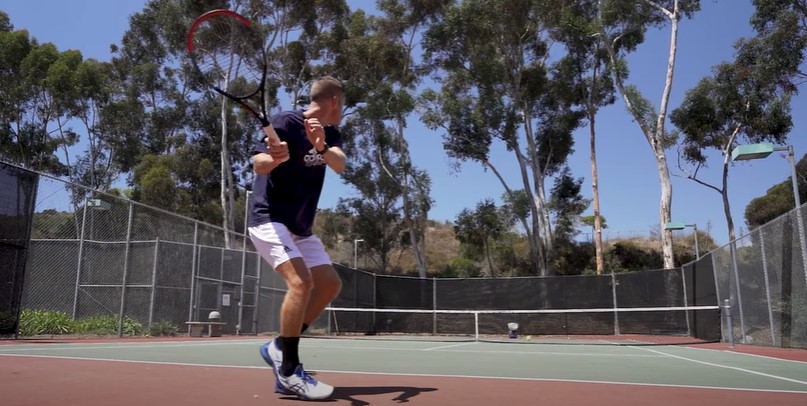
The Frequency
If you’re wondering how often you need to restring your tennis racket, the standard answer is when the string breaks. However, serious players typically replace the strings more frequently than that. As a general rule of thumb, players should restring their rackets as many times during the year as they hit the courts each week. For most players, this amounts to around 50 restringing sessions per year.
However, this number can vary depending on the type of strings used, as some options tend to break more easily than others. Ultimately, it’s important to pay attention to the tension and elasticity of your strings and restring your racket as needed to maintain optimal performance on the court.
What Are the Additional Costs and Considerations?
The Tennis Racket Grip
Having an ill-fitted racket grip can be a nightmare for tennis players. It can negatively affect your performance, cause blisters, stress your wrist, and even lead to injuries. This is a common problem that players face, but it can easily be solved by adjusting the tennis racket grip size.
One way to fix this issue is by adding an overgrip, which can cost between $10 to $20 and provide an immediate solution. However, reducing the handle size can be expensive, costing hundreds of dollars and lasting for some time. The best approach is to choose a smaller size grip initially and add some dimensions to it later if necessary.
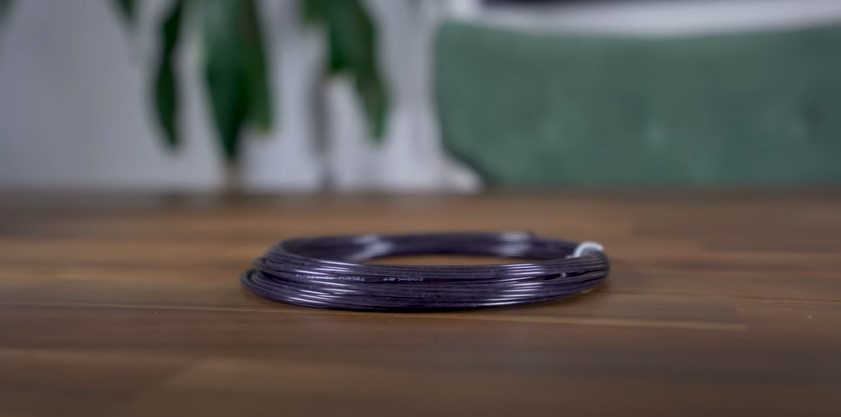
The Customization
Customizing a tennis racket is an excellent way to get the most out of your equipment. You can tailor it to your specific needs and preferences by adjusting various aspects like weight, balance, and string tension. One of the easiest ways to customize your racket is by changing the gauge of the tennis strings.
A thicker gauge will increase stiffness, while a thinner gauge will increase comfort. You can also change the tension of the strings to modify the power, control, and comfort of the racket. By customizing your tennis racket, you can optimize your performance and enjoy the game even more.
The Tennis Restring Machine
Having access to a restringing machine can be a game-changer for tennis players who frequently restring their racket frames. If you’re looking to save time and money, you might want to consider investing in a restringing machine. Many local tennis clubs rent these machines out for a fee, so you don’t have to buy one outright.
However, if you’re a professional player or play frequently, it might be a good idea to invest in a restringing machine of your own. These machines come in various sizes and brands, and prices can range from a few hundred dollars to thousands of dollars. It can be a smart investment, but it’s important to do your research to find the right one that fits your needs and budget.
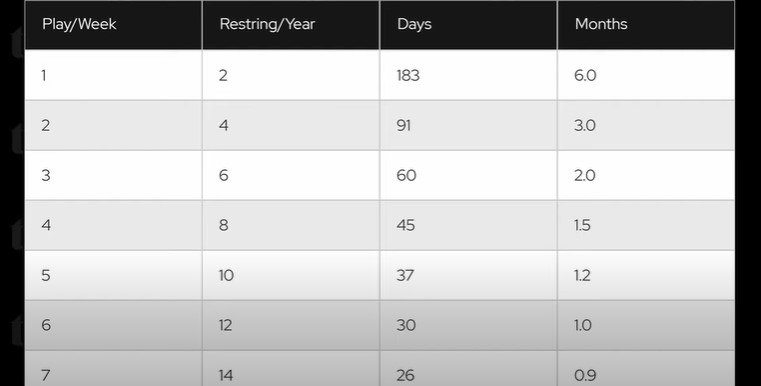
What Are the Different Types of Tennis Strings?
One of the primary things you’ll notice while shopping for tennis strings is the vast variation in cost between different types of materials. As a result, it should come as no surprise that the price of restringing a tennis racket depends on the type of string you choose.
Natural Gut
Natural gut tennis strings are crafted from the raw materials of cow intestines. The production process is lengthy and demanding, requiring precise and meticulous attention. Natural gut strings are a top choice among tennis players due to their exceptional quality, although they are also the most costly option.
The price can vary depending on the brand, with some costing hundreds of dollars. Natural gut strings have a soft and stretchy texture, providing players with numerous benefits.
Multifilament
Multifilament tennis strings are designed to replicate the characteristics of natural gut strings, and they do a remarkable job. Unlike natural gut, multifilament strings are much more affordable, making them accessible to a broader range of players. They are also easier to replace, which makes them a popular choice among novice and casual tennis players who don’t want to overspend on equipment.
Multifilament strings are known for their soft and comfortable feel, which provides ample power while maintaining tension. However, they may lack control and spin potential, which is a reasonable compromise for their affordability and comfort.
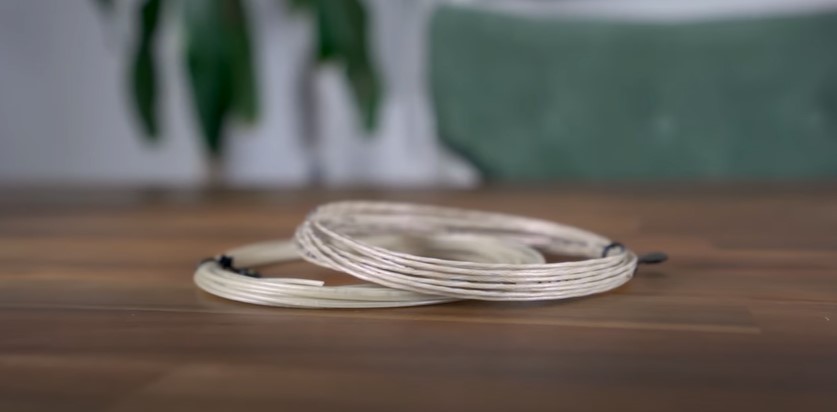
Synthetic Gut
Synthetic gut strings are an affordable and durable option for tennis players. Made of nylon materials, they are resistant to breakage and won’t need to be replaced as often as other types of strings. Synthetic gut strings come at an average or even cheap price point, making them accessible to all players.
Although they offer average performance, they have a solid structure that can hold tension well and provide a decent amount of spin potential. Synthetic gut strings are comfortable to play with and are a popular choice among beginner and recreational players.
Polyester
Polyester tennis strings have gained popularity in recent years as tennis has become increasingly competitive. These types of strings are best suited for advanced players who are looking for a high level of control and heavy spin. They are incredibly durable and resistant to breakage, which is perfect for aggressive players who hit the ball with power.
While they are available at a reasonable price, they tend to lose tension over time, which means they may need to be restrung more often than other types of strings. Nevertheless, for players looking to take their game to the next level, polyester strings are a great option.
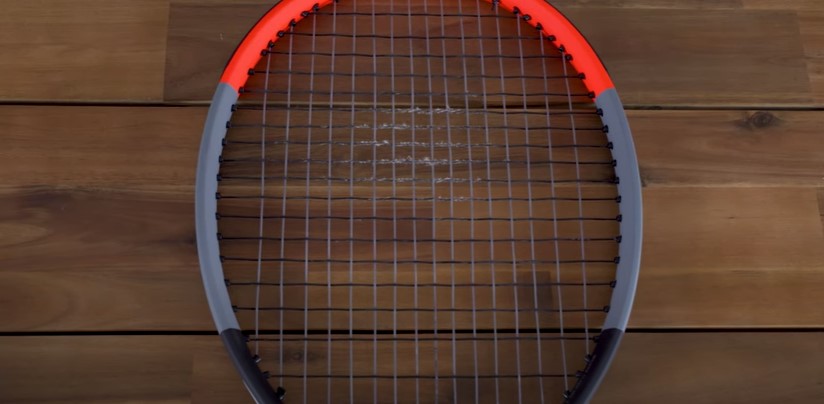
Can You Restring Your Own Tennis Racket?
Restringing your tennis racket at home might seem like a good idea, but it can be a bit challenging to do so without proper equipment. Typically, tennis shops use tennis stringing machines to ensure the right tension and pattern of the strings. These machines can be quite expensive, ranging from hundreds to thousands of dollars, so it’s not a sensible investment for occasional stringing.
While it might be tempting to attempt manual stringing with weights, it can be very time-consuming, and the result may not be up to par with the quality of a professional restringing. Therefore, it’s best to leave the restringing to the professionals who have the right tools and experience to do it correctly.
Is It Worth Restringing a Tennis Racket?
It’s important to restring your racket regularly to maintain its performance. The frequency of restringing depends on how and how often you play. Some may be wondering if it’s better to restring their racket or buy a new one. Well, it depends on the condition of your current racket. If it’s still in good condition and provides the desired combination of power and control, then there’s no need to replace it.
However, if you’ve tried different strings and still not getting the desired result, it may be time to consider switching to a new racket. A racket’s performance depends on both the frame and strings, so finding the right combination is essential. If the frame is damaged, then a new racket is necessary.
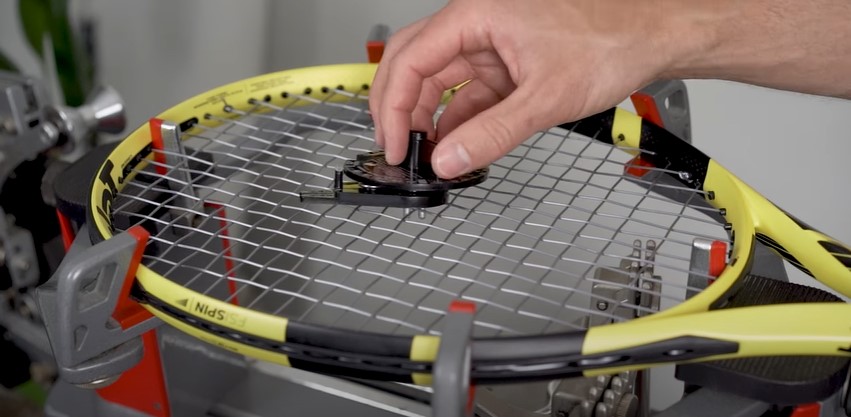
Conclusion
Restringing a tennis racket is an essential aspect of maintaining the racket’s performance and ensuring an enjoyable playing experience. The cost of restringing a racket depends on the string type and the quality of service you choose.
While natural gut strings are the most expensive, synthetic gut and multifilament options offer more affordable and accessible choices. And if you’re unsure about whether to restring or replace your racket, consider your play style, preferences, and the racket’s condition.

